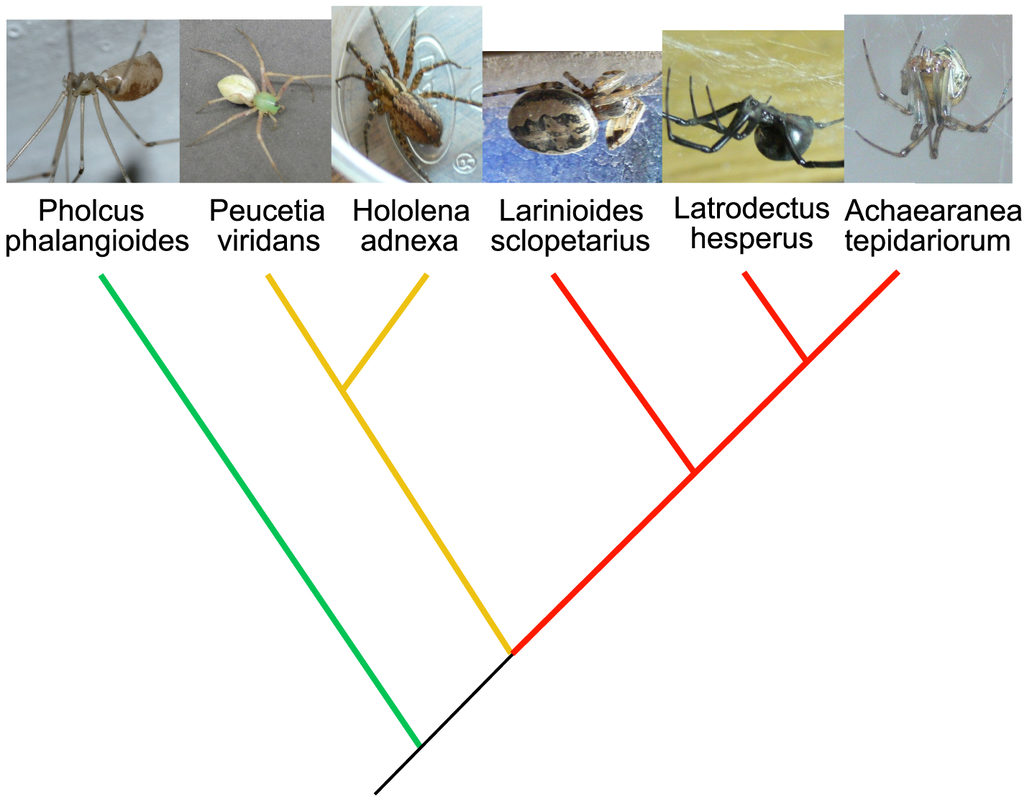|
Spiders belong to the class Arachnida and are known for their eight legs, venom-producing fangs, and capability to spin silk. They are distributed all over the world and have evolved over millions of years, adapting to various ecological niches and developing diverse hunting and defensive strategies. The Origins of Spiders
Spiders are thought to have originated from a group of extinct marine arthropods called Chelicerata, which first appeared in the Cambrian period, around 500 million years ago. The chelicerae, or pincers, that are characteristic of spiders, were originally used for grasping and shredding prey, and eventually evolved into venomous fangs as spiders developed more sophisticated hunting techniques. The Diversification of Spider Groups Today, there are over 48,000 known species of spiders, which are classified into 114 families. Spider groups have diversified greatly over time, adapting to various habitats and adopting unique methods of locomotion, web construction, and prey capture. Orb Weaving Spiders Orb weaving spiders are known for their circular webs that are used for catching flying insects. These spiders are found in diverse environments, from tropical rainforests to Arctic tundra, and have evolved various strategies to protect their webs from predators. Some orb weaving spiders have a camouflage pattern on their abdomen that allows them to blend in with the vegetation, while others spin their webs in high places that are difficult for predators to reach. Hunting Spiders Hunting spiders are active predators that do not rely on webs to catch their prey. They use their sharp vision and fast reflexes to stalk and capture their prey, which can include other spiders, insects, and small vertebrates. Some hunting spiders have excellent camouflaging abilities and can disguise themselves as bird droppings or tree bark. Others use their speed and agility to chase down prey. Jumping Spiders Jumping spiders are known for their exceptional vision and ability to jump several times their body length. They use their keen eyesight to accurately judge distance and size, allowing them to precisely target and capture their prey. Jumping spiders are distributed all over the world and have adapted to various habitats, from deserts to rainforests. Trapdoor Spiders Trapdoor spiders are so named because they construct underground burrows with camouflaged entrances that are used for ambushing their prey. These spiders usually remain hidden in their burrows, waiting for insects or other small animals to come close, before quickly lunging out to capture them. Some trapdoor spiders also use vibration sensing to detect prey nearby. Spider Adaptations Spiders have evolved various adaptations that allow them to survive and thrive in diverse environments. Some of these adaptations include:
Conclusion Spiders are fascinating creatures that have evolved over millions of years, developing a wide range of adaptations that allow them to survive in diverse habitats and adopt unique hunting strategies. By studying these amazing arthropods, we can gain a deeper understanding of the natural world and the complexity of life on our planet.
0 Comments
Leave a Reply. |
�
categories
Categories
All
|





 RSS Feed
RSS Feed